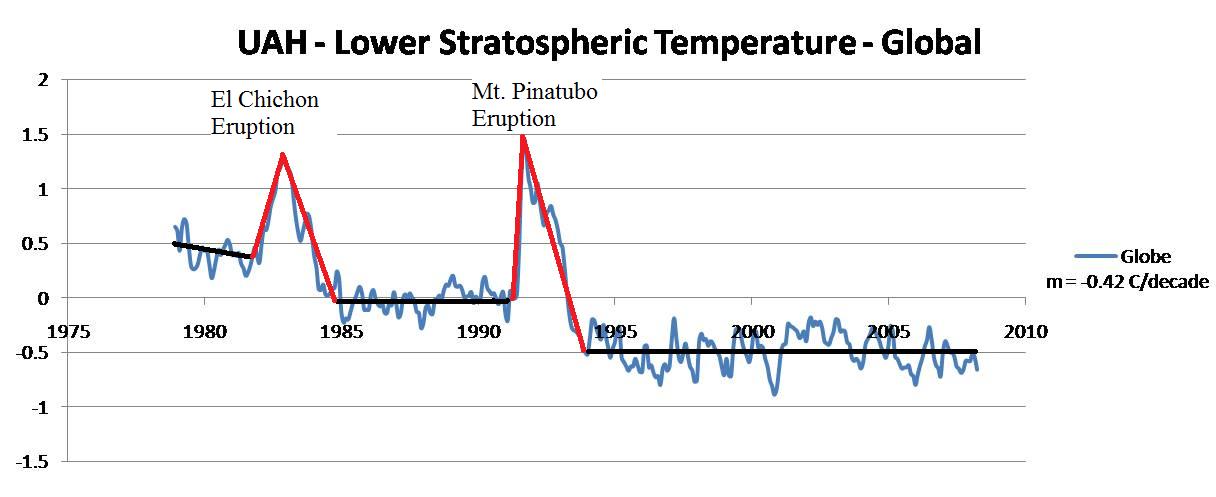There are other more unusual pieces of compelling evidence, such as the fact that the atmosphere above the troposphere — the part where our weather doesn’t really exist, which we call the stratosphere — is systematically cooling. It’s very difficult to explain that cooling except from the ways in which we’re altering the carbon dioxide concentrations in our atmosphere, which we believe are leading to the warming that we see.
The stratosphere cooled in two steps after large volcanic eruptions. What does that have to do with CO2?
http://climatechangeskeptic.wordpress.com/2008/08/27/stratospheric-cooling/



Pinatubo created a hole in the tropopause and allowed nasty CO2 molecules to get through
I thought the predictions of cooling were for the upper stratosphere and the region you are showing is expected to be flat.
Each line segment after an eruption is flat.
The effect increases from the lower stratosphere upwards.
Your conclusion that the only effect is the eruptions for this
height is based on something other than staring at a graph?
http://www.sciencemag.org/content/311/5764/1138.abstract
http://www.agu.org/journals/ABS/2009/2008JD010421.shtml
This paper shows the altitude dependence in conjunction with the volcanic activity. See Fig 10, in particular. The trend is particularly clear at 50 hPa derived entirely from radiosondes in Fig 14.
http://acd.ucar.edu/~randel/SPARC_revised.pdf
I’m sure it is just a coincidence that both drops occurred right after large volcanic eruptions. Theory always trumps actual evidence.
The papers I referenced include the volcanic effects and note this on their graphs.
A drop in climate science is never a drop. It’s just an uptick that hasn’t been corrected yet.